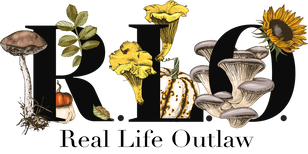SubscribeCategories
All
ARCHIVES
|
⇠ Back To Blog
Most of What You Eat is Not Real Food10/14/2021 The Speigel Online conducted an interview with legendary chef Alice Waters about the “eat local” movement, which has become a force to be reckoned with in the United States in recent years. Waters was one of the pioneers of that movement — she transformed her state’s cooking in the 1970s into world-renowned “California cuisine” with her Berkeley restaurant Chez Panisse. She promoted the use of in-season produce from local farms, and advocated planting vegetable gardens in schools. More than three decades later, Waters is still promoting sustainable agriculture. She is now vice president of the international Slow Food movement, which promotes regionally grown goods and local culinary traditions. In the interview, Waters expressed her opinion that most of the food currently being consumed is not real food. Real food, she argues, is grown by people who take care of the land, and who refrain from using herbicides and pesticides. Real food is food that’s grown for taste, and it’s grown in a way that pays people a good wage for their work rather than being grown at somebody else’s expense. To read the whole interview, and see what Waters has to say about seasonal food, the spread of the eat-local movement, and the food policies of President Obama, click here. Do you ever wonder when the concept of “food” expanded from meat, vegetables, raw dairy products, fruit and other such natural items to include the highly processed, preserved, artificially flavored and often brightly colored concoctions that now exist in supermarkets? Perhaps it began in the ‘50s with the advent of the TV dinner, or around the time McDonald’s began expanding their hamburger business. It’s anyone’s guess, really, but this quasi “food” really caught on. Nowadays, 90 percent of foods Americans purchase every year are processed foods, and in 2006, 2,800 new candies, desserts, ice cream, and snacks were introduced to the marketplace, compared to just 230 new fruits or vegetable products. Of course, food marketers do a masterful job at making it seem like fast foods and junk foods are the obvious choice, and they spend mega-billions every year to convince you and your kids to choose highly processed convenience foods over REAL foods. But there are some rays of hope shining through. Real Foods are Becoming More Popular When you hear the term “what’s old is new,” it most often applies to fashion or slang terms … but it can also be applied to food. That is, increasing numbers of people are reverting BACK to the ways of our ancestors, and choosing to purchase food directly from local farmers, and cook it using slow, traditional methods. For instance, after declining for more than a century, the number of U.S. small farms has increased 20 percent in the past six years. This is in large part a result of the growing demand for locally grown foods, which is slowly but surely shaping the business of food in the United States. An interesting study, published in the American Journal of Agricultural Economics, recently hit this point home. After surveying nearly 500 people, they found food shoppers were willing to pay more for locally grown food, and those shopping at farmers’ markets were willing to spend the most for food grown close to home. The top reasons people gave for wanting locally grown food?
How Can You Identify REAL Food? There are major incentives to center your diet on real foods as opposed to “food products,” the primary one being it is essential for optimal health. Real foods also taste delicious, and when bought from sustainable sources help to protect the environment. So how can you tell the difference? Real food almost always has the following characteristics:
“Food products,” meanwhile, tend to have these traits:
If you want to take things a step further, and I suggest you do, here is what you need to look for (whether you’re at the grocery store or farmers’ market) to find not just any food, but high-quality food:
Looking for Real Food Sources Near You? As you discover the alternative food networks in your area — things like farmers’ markets, food coops, and community-supported agriculture — you’ll begin to feel a connection to your community that you likely never felt before. And sources of sustainable food are becoming surprisingly easy to find these days.
To find sustainable agriculture movements in your area, from farmer’s markets to food coops and more, please see this comprehensive list. If that doesn’t turn up anything, you can often find real food sources by:
|
 |
Latest Blogs |
Useful Links |
About RLOReal Life Outlaw is dedicated to providing crucial nutrition facts and individual health advisory.
|


 RSS Feed
RSS Feed
